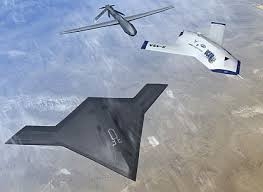Vehicle manufacturing has come a long way since 1908 when Henry Ford began production of the Model T automobile using a mass production assembly line.
Read More »Connected Vehicles and V2X Vehicle to everything technology
Today 1.35M people die each year in automobile crashes globally; 38,000 in the U.S. alone, the equivalent of two 747s crashing in mid-air every single week. Counterintuitively, despite the COVID-19 pandemic leading to fewer drivers on the roads and a significant reduction in the number of miles driven, the latest …
Read More »Synthetic and Sustainable Aviation fuels (SAF)
A big push has been to increase the efficiency of aircraft engines, mainly to make them go faster, to fly higher and use less fuel. Now a new concern has come to the fore, that of environment. We have to use as little fuel as possible, create as little …
Read More »Counter drone swarm technologies, required as drone swarms being employed for surveillance and delivering weaponized explosives
Criminals have been using drones in a variety of ways. They use them to prepare house break-ins, observe larger targets, spot security gaps, and determine security guard patterns. Militant organizations have started employing drones to further their terrorism. The small drones such as a quadcopter or model airplane are readily …
Read More »US Army doctrine thrust on multi domain operations employing AI to counter A2/AD
Russia and China employ formations and capabilities (lethal and nonlethal) that overmatch those of the U.S. in range and lethality, thus challenging the Army’s ability to conduct operational maneuver, gain positions of relative advantage, and generate close-combat overmatch. China’s and Russia’s rate of technological optimization will continue to outpace …
Read More »Air-launch-to-orbit brings space launch to any airport and covert military satellite launches
There are three major launch types for spacecraft: vertical takeoff, horizontal takeoff, and air launch. The cost of launching into space is often measured by the change in velocity required to reach the destination orbit, known as delta-v or Δv. The amount of Δv required for a mission depends on …
Read More »Airforce develop Artificial Intelligence and Autonomous Systems to meet challenges of Cyber-Attacks, Anti-Access/Area-Denial (A2SD) actions and Space Threats
The current Armed drones like Predators and Reapers are essentially remote controlled that is they involve human operators remotely controlling the vehicle with the assistance of fairly low levels of automation for some functions (e.g., the operator specifies waypoints to be followed by the platform). Systems like these have proved …
Read More »US Army’s “Project Convergence” evaluating technologies, Joint and Multinational interoperability for A2/AD and Multidomain capability
Russia and China have developed sophisticated military capability for A2/AD and Multidomain capability. Anti-Access is defined as any action, activity, or capability, usually long-range, designed to prevent an advancing military force from entering an operational area. Area Denial is defined as action, activity, or capability, usually short-range, designed to limit an …
Read More »DARPA MELT developing high energy lasers for directed energy weapons to counter drone swarms
Laser technology provides major advantages for military applications over kinetic weapons due to High precision and rapid on-target effect, precise and scalable effects, avoidance of collateral damage caused by fragmenting ammunition, Low logistics overhead, and minimum costs per firing. The proliferation of small, low-cost Unmanned Aircraft Systems (UAS) on …
Read More »Multi-Robot Collaborative Localization
Humanitarian Crisis scenarios occur frequently and they typically require immediate rescue intervention. In many cases, the scene conditions may be prohibitive for the human rescuers to provide instant aid, as they have to act within hazardous conditions, like collapsed buildings, air-poisoned, or radioactive environments. Many organizations and research teams are …
Read More » International Defense Security & Technology Your trusted Source for News, Research and Analysis
International Defense Security & Technology Your trusted Source for News, Research and Analysis


